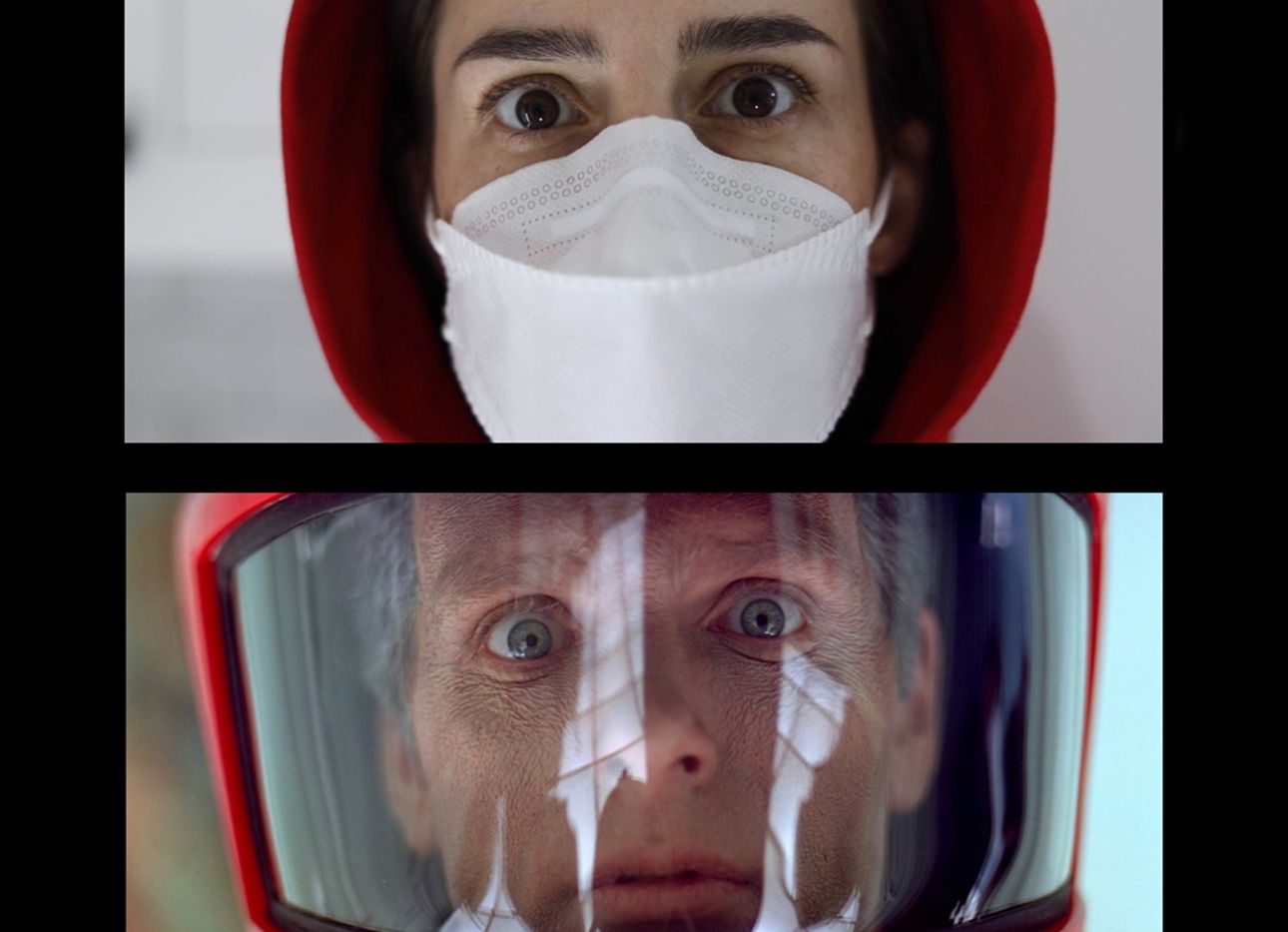
Designer Lydia Cambron Makes a Quarantine Version of the Finale of “2001: A Space Odyssey”
For the past five years, as one of the co-founders of the annual “JONALDDUDD” exhibition, designer Lydia Cambron has put on one of the most consistently surprising and challenging presentations of New York Design Week. The group show irreverently eschews all the gloss and polish of contemporary furniture design by lampooning notions of function, elegance, and efficiency—and embracing oozing slime as a running motif.
With the sudden halt brought on by the pandemic, that familiar seasonal rhythm has thrown Cambron and much of the industry into a slight hibernation, as artists spend increased time in the domestic settings they design for, and that “JONALDDUDD” implicitly critiques. Sheltering in place has proved creatively fruitful for Cambron in other ways, though: Earlier this month, she debuted her first short film, 2020: An Isolation Odyssey, a brilliant, uncanny, frame-for-frame reimagining of the ending to Stanley Kubrick’s 2001: A Space Odyssey. We caught up with Cambron to talk about domesticity in the time of Covid-19, her self-taught foray into filmmaking, and what she’s working on next.
When did the idea for this film project begin?
Pretty early on into quarantine—maybe a week. I started working from home in mid-March. I have a separate series I’ve been working on that investigates the aesthetic similarities between baroque décor and the material language of space exploration. The iconic room of 2001 is a precedent for that kind of aesthetic blending, for sure, and I think it was just top of mind as I was reflecting on my own “new normal.” In terms of what really sparked the connection, it was just sitting with my own anxiety and uncertainty, and watching, through what was shared publicly, how those around me reacted and coped with what to do and how to direct their energy.
We had also just decided to postpone “JONALDDUDD,” and I stopped working on my own projects—I had been designing and building a sofa for the show. And I even gave up my studio. All to say, I was a little starved for a creative outlet, stuck at home, and eager to pour all my energy into something. Something just bubbled up, and I was like, “That’s it! That’s what I can do!”
How has isolation affected your day-to-day and work?
It’s been a journey, to say the least. Initially I was working from home, then furloughed. It shifted a lot after that, and it was really great to basically have another full-time job, working for myself. In some ways, I did exactly the thing I had been critiquing: calming my nerves with products and productivity. I can be pretty anxious, and am one of those people who needs to “recharge” after being social, so I didn’t mind staying in.
What inspired you to reenact the ending scene from 2001, in particular?
The emotion of the finale. It’s obviously set in a single room in a domestic space, and the main character is isolated. That gave me the idea, but the emotion is what makes it so relatable to what many of us are experiencing now. The stages of quarantine map onto it well: confusion, acceptance, being ready to move on, and feeling like this experience was transformative.
The domestic space is so potent to me. It’s private and personal to everyone, obviously, but universal in a way that makes its narrative ability really powerful and intuitive to work with. This is also a theme for me––my work often explores private behaviors and anxieties through parody, satire, and product narratives. Some of my projects, like Twice Daily and Uncommon Utility, tap into regulating or facilitating emotion through domestic products. This is where the critique comes in for 2020, as well, by dramatizing our impulse to control what’s going on by staying active and, like, better outfitting our homes and this new home life. Which is again, literally what I did in making this film. I am not exempt, which makes me extra-qualified to comment on it! I had actually never filmed or edited video, and did not have any of the tools prior to coming up with the concept. There was a lot of learning involved.
How are you “evolving” during this strange, intense time?
The cultural shifts and revelations happening are both public and private, and are definitely a part of my own evolution. More logistically, my employment shifts require some re-evaluation. Working in retail and seeing that industry take the hit has got me thinking about other ways to apply my experience. I already work between and across fields with my independent and curatorial projects, but this could mean more of a change for me. For now, it’s TBD.
The days stretch and blend. I’m more comfortable with that now, and definitely appreciate the chance to get out of the grind for long enough to think a little further out. That may sound vague, but I think having such a prolonged time away from what things were before forces an openness to alternate futures and views. I don’t mean that in a silver lining or opportunistic, hustle kind of way—more that it’s so uncertain and unknown and so collectively felt, that it’s difficult to put a positive spin or adopt a new point of view right away on whatever form your new reality has taken. I’m okay with a slower process. One that’s long enough to force a good cry, instead of only ever getting as far as nervous laughter.